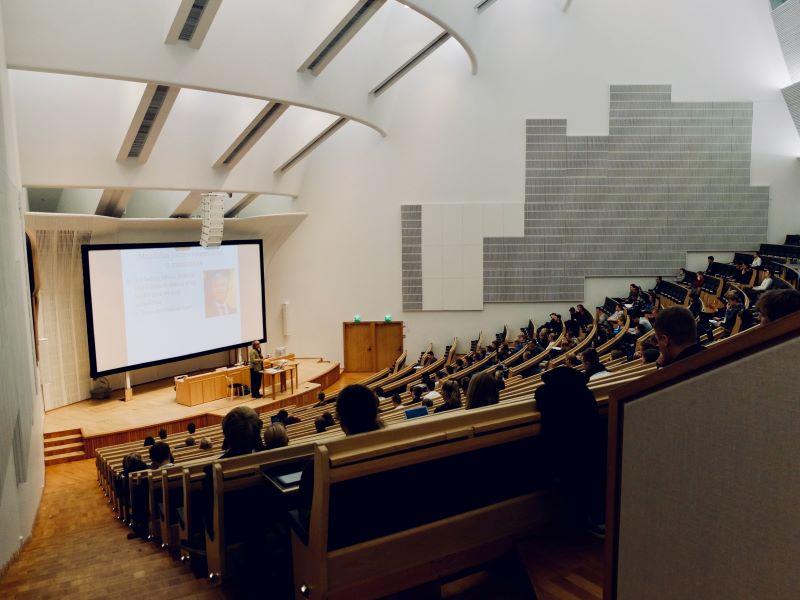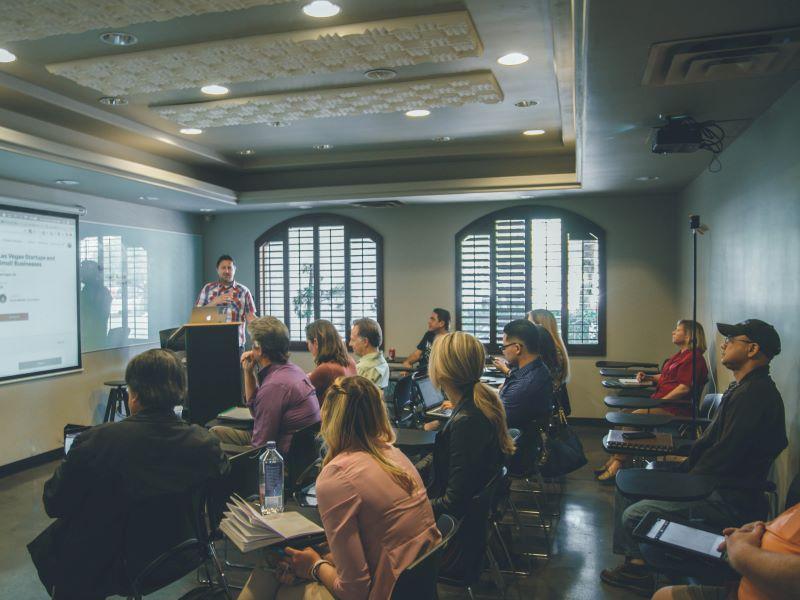To keep up with the sudden migration online, many institutions rushed to implement virtual classroom solutions as quickly – and cheaply – as possible.
However, with e-learning here to stay, the time has come to think about how to incorporate these solutions effectively into educational offerings for the long term.
At the most basic level, the technical elements that make an online classroom are:
1. Video recording
2. Audio recording
3. Screen capture
There are many ways to implement these essential components and several considerations to keep in mind.
Hybrid-flexible or HyFlex teaching is similar to a blended classroom – a classroom equipped with technology that supports remote teaching. The main difference between HyFlex and blended is the flexibility. With HyFlex, students are given the option to attend class in person or remotely, depending on their preference and location. Both typically support real-time and pre-recorded lessons.
The HyFlex spectrum
Every organisation starts somewhere on the HyFlex spectrum.
Point A is a quick and cheap starting point. It meets the most basic needs of an online classroom with webcams, microphones, screen capture software, and a way to get the video to students.
It doesn’t have a Learning Management System (LMS), integration or automatic uploading.
Point B is a fully comprehensive offering. Classrooms outfitted with premium hardware and software solutions, such as cameras that track educators, capture their content, have live broadcasting, and automatically upload that lesson to an LMS.
Students and educators will always push the organisations towards point B.
But most organisations sit somewhere in the middle of these two points. Many have an LMS, ways to manage video, remote meetings and classroom software, and processes to help these systems work together.
Improving HyFlex learning: Getting to point B
To plan long-term solutions, organisations need to ask themselves the following questions:
What should classrooms look like in 5 to 10 years?
The goal for most organisations is to reach point B, and that should be kept in mind when planning new projects and implementations.
For example, my organisation has a small percentage of rooms equipped with lecture capture-integrated software that uploads to the teacher’s video management platform. The teacher can then choose to link it to the LMS for use in their class.
We know what the end game looks like and are working towards it with each new addition to our system.
Some key considerations for lecture and class recording:
How are we protecting sensitive data?
Recordings of students and educators require additional security considerations. Where is that data going? Is enough being done to keep it safe?
What will make classrooms more effective?
What are the most effective ways to enable students to see what educators are writing in class? Smartboards, document cameras and cameras are all viable options, but which one works best within the technology ecosystem at your organisation?
How can we streamline processes to save time?
The internet of things will play an essential role in optimisation of HyFlex classrooms in future. So, start planning a smart campus now even if you cannot yet implement it, and identify the systems that would be better managed centrally.
For example, an ideal implementation would be to detect problems such as classroom hardware failure before an educator arrives in the room, so that it can be fixed ahead of the class or the educator can plan around it.
Look for platforms and systems that can monitor or automate simple tasks that would make day-to-day life easier. This will allow academic and administrative staff to devote more time and energy to tackling bigger problems.
What are the best options available with the current resources and budget?
An organisation that cannot currently achieve point B must recognise that while it might be necessary to find a quick, less comprehensive solution in the short term, it will incur the cost of replacing it with better systems later.
Pandemics are not kind to businesses, least of all bricks-and-mortar establishments. Ensuring that a company can continue to provide services in the short term is crucial to thriving in the long run. An institution that cannot immediately secure the best set-up must accept that, and pick the next best thing.
How do these choices integrate with the LMS?
You’ll have to do some research to determine what levels of integration are available. It’s a challenge to find applications and platforms that perfectly integrate into an LMS that an organisation has been using for a long time. As a result, the issue of cost will inevitably come up.
This is where you need strong leadership to make the case for long-term investment, and technical staff with the foresight to help justify overhauling and replacing systems that aren’t going to scale in the way needed.
The most important thing to remember when working through large-scale projects like this is to maintain communication. It’s vital to fully understand the needs of educators and the local and remote students.
Deploy solutions with ease of use, provide training, and make sure everyone gets the help and support they need to get the most out of these systems.
Trent Montgomery is academic IT projects section manager in the Management Information Technology and System Office at Xi'an Jiaotong-Liverpool University.




comment2
(No subject)
(No subject)